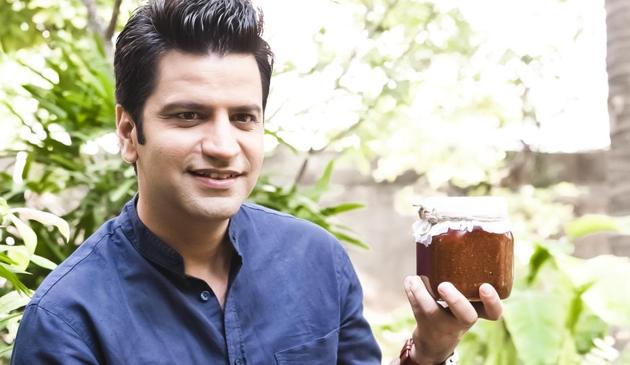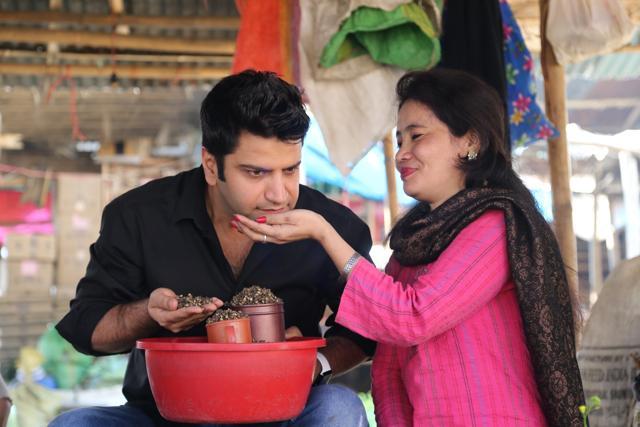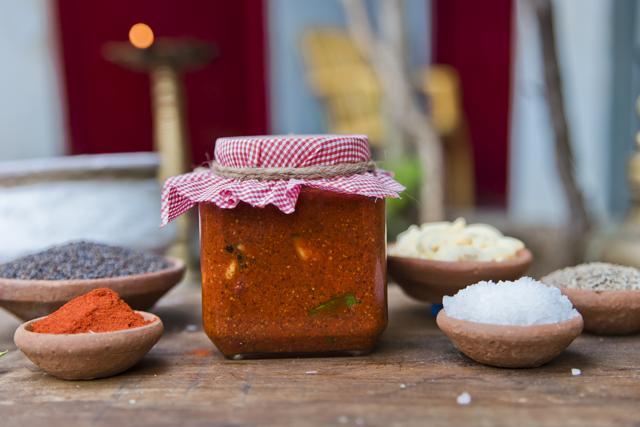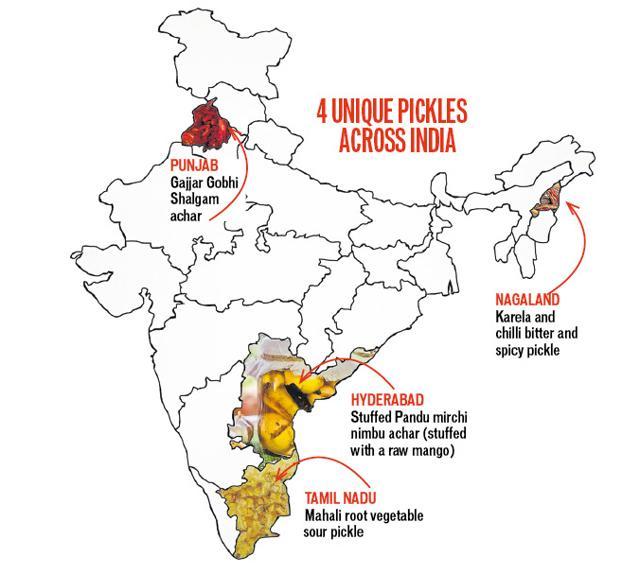Why chef Kunal Kapur is on the hunt for unique pickles across India
Eating and watching pickles being made is the stuff of childhood memories. Now, chef Kunal Kapur is on a mission to find the most unique ones, and give them the culinary pride of place they deserve
Eating and watching pickles being made is the stuff of childhood memories. Now, chef Kunal Kapur is on a mission to find the most unique ones, and give them the culinary pride of place they deserve

Even over the phone line from Delhi, late on a winter night, chef Kunal Kapur (37) is brimming with stories and facts about pickles. “Did you know that the first pickles originated in India, and were made using cucumber?”
He needs no cue to go on. He proceeds to tell us how pickles are no mere side dish, as we often imagine them to be, but an integral part of the meal in many states. He cites the example of the Bhut jolokia pickle cultivated in north east India (the chilli pepper is considered to be 400 times hotter than Tabasco sauce).
Read: The Indecisive Chicken: the cookbook from Dharavi

“In Assam, I asked a lady, ‘Auntie, why do you eat this pickle?’ She said that hunger drives them to eat it, and it is quite nutritious. In its pickled form, the heat gets mellowed, and it can be eaten with roti,” says Kapur. Similarly for the Khasi tribespeople of Meghalaya, the pickled bamboo they make is critical to their survival. “If they don’t pickle it right, they have nothing to eat in winter.”
Kapur’s interest in pickles is not surprising, considering he has been living, eating and breathing pickles over the last year. The chef became a household name after hosting and judging MasterChef India (since 2010). Last year, he did another show — called Pickle Nation. While it required Kapur to travel extensively in search of pickles, he felt the 18 episodes didn’t do justice to the varieties India has to offer.
So, now, he’s decided to continue the quest to document India’s pickles on his own, and turn it into a book (slated to release in 2018) with not just recipes, but history and anecdotes.

In December 2016, Kapur started Pickle Tickle, a campaign to enable home cooks and pickle-makers to submit unique recipes on his website. The ones that interest Kapur will be shortlisted, and he will make a trip to meet the makers and jot down the recipes (he is shooting the images himself as well). “I know it is a kind of pagalpan (madness) to travel and invest my time and money in this project, but I didn’t want to rely on the internet,” he says.
The proof is in the pickle
So far, Kapur has travelled to Nagaland (in December), and will be heading to Assam this month, followed by Kerala. “Nagaland was an eye-opener. Apart from their popular beef/pork pickles, they have many vegetarian pickles, including mustard leaf pickle and bean pickle,” he says.

At a time when bottled, branded pickles are easily available, the tradition of making it at home is dying. Kapur’s aim is to change that: “Unlike bottled pickles that taste the same, there is a certain character to the home-made ones. That’s why every family’s achaar (pickle) tastes different. Our popular culture is also intertwined with pickles: Parsis even have a saying, ‘Jiska achaar bigda, uska saal bhi bigda’ (if the pickle goes wrong, so will your year).”
Pickles often carry an unhealthy tag, because of the generous amounts of oil. But Kapur disagrees: “As with other snacks, one needs to exercise moderation. In fact, pickles can be a good way to enjoy seasonal produce through the year. I have also come across ones made using water or buttermilk instead of oil.”

How I learnt to cook
Kapur’s pickle memories, as would be the case for most of us, goes back to his childhood: in Delhi, he and his sister would help their mother make mango pickle. “During the summer, we would go to the terrace, and all the houses in the neighbourhood would be drying pickles in sunlight at the same time. It was quite a sight. When it would rain, we could hear shouts of ‘Achaar ko neeche lao (bring it down)’. Even my tiffin was paratha/roti with achaar. This project helps me relive those childhood memories.”
Home is also integral to Kapur’s love for cooking. Growing up in a joint family, he recalls a Sunday tradition, when the men in the family would take over the kitchen. “They would only make non-vegetarian dishes. As I was the only young boy, they would make me sit on an oil canister and stir whatever was being cooked. It was my first lesson in cooking.”

Kapur later studied at the Institute of Hotel Management, Chandigarh. With Indian cuisine as his forte, he worked at the Taj, Radisson, and Leela hotels, among others. But it was MasterChef that made him a familiar name. “Before MasterChef, cooking shows were an afternoon slot on TV. This introduced the idea of food as entertainment. I remember a remark by a viewer during season one: ‘Recipe toh dikhaya nahin’ (Where is the recipe?). A lot has changed.”
Apart from the book on pickles, Kapur is currently busy shooting for the third season of his show, My Yellow Table, on NDTV. This year will also see him launch his own restaurant in Delhi. He is also writing two other books: one on the basics of cooking, and a humorous one on the prejudice that men can’t cook.

But for now, with the curiosity of a kid stirring food sitting on an oil canister, he is happy to learn about, and relate anecdotes of, pickling: “I am curious about the science and the processes. Like, why is a cloth is wrapped around the pickle jar...” He goes on.
If you think your pickle recipe is unheard of, submit it on chefkunalkapur.com/pickles-recipe.html





